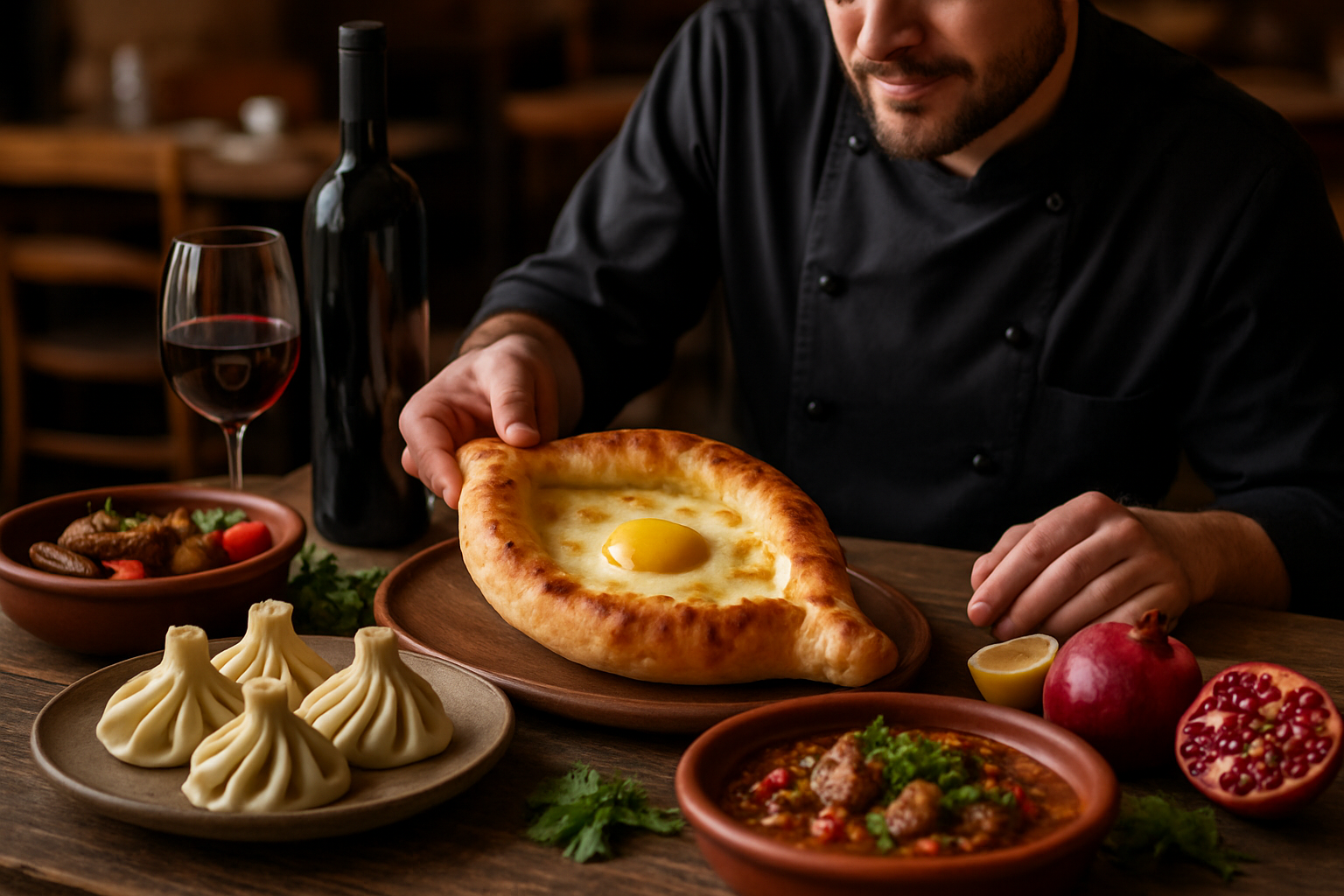The Avant-Garde Renaissance in Contemporary Cuisine
In the bustling world of gastronomy, a new movement is taking shape, challenging traditional notions of what constitutes a meal. This avant-garde renaissance in contemporary cuisine is pushing the boundaries of culinary art, blending science, technology, and creativity to redefine the dining experience. From molecular gastronomy to multi-sensory dining, chefs and food artists are revolutionizing the way we perceive, consume, and interact with food.

Chefs like Ferran Adrià at elBulli in Spain and Heston Blumenthal at The Fat Duck in England pioneered techniques that would become hallmarks of molecular gastronomy. They employed scientific principles to create dishes that challenged diners’ expectations, using methods like spherification, foam creation, and liquid nitrogen freezing to transform familiar ingredients into entirely new forms.
The Science Behind the Art
At the heart of avant-garde cuisine lies a deep understanding of food science. Chefs collaborate with chemists, physicists, and even psychologists to explore the properties of ingredients and the ways in which they can be manipulated. This interdisciplinary approach has led to innovations such as edible balloons, flavor-changing chewing gum, and dishes that appear to defy gravity.
One of the most prominent techniques in this culinary movement is sous-vide cooking, which involves vacuum-sealing ingredients and cooking them in precisely temperature-controlled water baths. This method allows for unprecedented control over texture and flavor, enabling chefs to achieve perfect consistency in their dishes time after time.
Multi-Sensory Dining Experiences
Avant-garde chefs are not content with simply creating visually stunning and flavorful dishes; they aim to engage all of the diner’s senses. Multi-sensory dining experiences have become increasingly popular, with restaurants offering immersive environments that complement and enhance the food itself.
For example, some establishments use projection mapping technology to create dynamic visual landscapes on dining tables, transforming the surface into an ever-changing canvas that interacts with the dishes. Others incorporate soundscapes or scent diffusers to create a fully immersive atmosphere that tells a story through food.
The Role of Technology in Culinary Innovation
Technology plays a crucial role in the avant-garde culinary movement. 3D food printing, for instance, allows chefs to create intricate shapes and structures that would be impossible to achieve by hand. This technology opens up new possibilities for food presentation and texture, enabling the creation of dishes that are as much works of art as they are meals.
Augmented reality (AR) is another emerging technology being embraced by innovative chefs. AR apps can provide diners with additional information about their meals, such as ingredient sourcing, nutritional content, or even visual representations of the chef’s inspiration for the dish.
Sustainability and Ethical Considerations
As the avant-garde culinary movement continues to evolve, there is an increasing focus on sustainability and ethical considerations. Many chefs are exploring ways to reduce food waste, incorporate overlooked or underutilized ingredients, and promote sustainable farming practices.
Some avant-garde restaurants have begun growing their own produce using hydroponic or aquaponic systems, ensuring a steady supply of fresh, locally-sourced ingredients while minimizing their environmental impact. Others are experimenting with alternative protein sources, such as insects or lab-grown meat, in response to concerns about the sustainability of traditional animal agriculture.
The Future of Avant-Garde Cuisine
The avant-garde renaissance in contemporary cuisine shows no signs of slowing down. As technology continues to advance and our understanding of food science deepens, we can expect to see even more innovative and boundary-pushing culinary creations in the years to come.
One area of particular interest is the intersection of neuroscience and gastronomy. Researchers are exploring how different flavor combinations and textures can trigger specific emotional responses or memories, potentially leading to the development of dishes designed to evoke particular moods or experiences.
Criticisms and Controversies
Despite its growing popularity, avant-garde cuisine is not without its critics. Some argue that the focus on technology and scientific techniques detracts from the fundamental pleasures of eating, while others contend that these elaborate dining experiences are elitist and inaccessible to the average person.
There are also concerns about the potential health implications of some molecular gastronomy techniques, particularly the use of chemical additives and stabilizers. As the movement continues to evolve, it will be crucial for chefs and food scientists to address these concerns and ensure that innovation does not come at the cost of safety or nutritional value.
The Impact on Traditional Culinary Arts
While avant-garde cuisine represents a significant departure from traditional cooking methods, its influence can be seen across the culinary spectrum. Many of the techniques and approaches developed by pioneering chefs have found their way into more conventional kitchens, leading to a general elevation of culinary standards and creativity.
This cross-pollination of ideas has also sparked a renewed interest in traditional cooking techniques and forgotten ingredients, as chefs seek to blend the old with the new in innovative ways. The result is a rich and diverse culinary landscape that continues to evolve and surprise diners around the world.
In conclusion, the avant-garde renaissance in contemporary cuisine represents a fascinating convergence of art, science, and technology. As chefs and food artists continue to push the boundaries of what is possible on the plate, we can look forward to a future where dining is not just about sustenance, but a truly transformative and multi-sensory experience.





